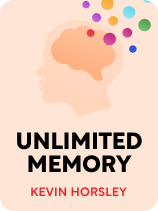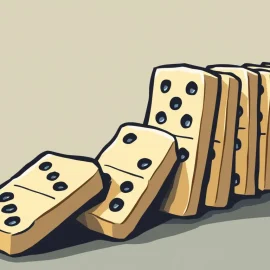

This article is an excerpt from the Shortform book guide to "Unlimited Memory" by Kevin Horsley. Shortform has the world's best summaries and analyses of books you should be reading.
Like this article? Sign up for a free trial here.
Do you lose information as fast as you learn it? How can you retain information better?
In Unlimited Memory, Kevin Horsley offers several techniques to help you remember everything by making associations between things you already know well. Once you’ve mastered these techniques, you need to continue to practice them every day.
Here’s how to retain information better and hold on to everything you’ve learned.
Hold on to What You’ve Learned
The attention and association techniques will help you remember things for a certain period of time, but in order to remember them forever, you need to practice and review the information regularly until it’s fully committed to your long-term memory.
According to Horsley, these reviews should take place at certain intervals to maximize your retention. The first thing you must do to learn how to retain information better is review the information 10 minutes after you’ve learned it. For this first review, go through the information in the reverse order from which you learned it. This greatly strengthens your memory of the ideas.
(Shortform note: Research suggests that when your brain is first reviewing newly learned information, it does so in reverse. Thus, deliberately performing your first review in reverse might be particularly helpful because it taps into your brain’s natural learning process.)
Next, he recommends reviewing the information at the following intervals: one hour, one day, three days, one week, two weeks, three weeks, one month, two months, and finally three months. After that, Horsley says, the information will be permanently etched in your memory.
(Shortform note: It’s unclear what the best intervals for reviewing information are, and research suggests it depends on the timing of when you’ll need to retrieve it. If your goal is permanent memorization (meaning you want to be able to retrieve it indefinitely), find the interval system that works best for you.)
Make It a Daily Habit
Horsley writes that while these techniques can work for anyone, it’s not an easy process, and it won’t happen if you don’t commit to doing it. Making these techniques work requires you to devote yourself to improvement, which in turn requires discipline.
You need to decide to practice them every day. Consider what goal you want to achieve (you may have identified this in the first step when you developed your sense of direction), and commit to achieving that goal daily.
| Developing Habits With Cues and Rewards In A Mind for Numbers, Barbara Oakley suggests that you develop habits through the same mental processes you use for memorization and learning. By developing an association between a triggering stimulus (or cue) and the habit you want to form, you can quickly train yourself to remember to perform that habit. You can reinforce this association by giving yourself a reward every time you perform the habit in response to the cue. For example, if you want to get into the daily habit of studying, identify something you do every day—such as watching television in the evenings—and use that as a cue to study. Then, after you’ve studied, you can reward yourself by watching television. At first, you’ll need to consciously remind yourself to study each night, but over time it will become an unconscious habit as your brain learns to associate that daily habit with the reward of watching television. |

———End of Preview———
Like what you just read? Read the rest of the world's best book summary and analysis of Kevin Horsley's "Unlimited Memory" at Shortform.
Here's what you'll find in our full Unlimited Memory summary:
- Why there's no such thing as a bad memory
- How anyone can train their brain to learn and remember anything
- Memory association techniques and how to use them






